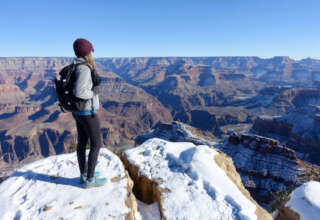Introduction
Hiking is a popular outdoor activity that offers a range of health benefits, including improved cardiovascular fitness and increased muscle strength. However, it can also lead to pain and discomfort in the calves, which can be a major deterrent for many hikers. In this article, we will discuss some tips for managing hiking-induced pain in the calves.
Causes of Calve Pain
Calve pain during hiking can be caused by a number of factors, including overuse, improper footwear, and improper technique. Overuse occurs when the muscles in the calves are repeatedly stressed, which can lead to inflammation and pain. Improper footwear, such as shoes that are too tight or do not provide enough support, can also contribute to calf pain. Improper technique, such as hiking on steep terrain or using the wrong type of pole, can also lead to calf pain.
Preventing Calve Pain
The best way to prevent calf pain is to take steps to reduce the risk of injury. This includes wearing proper footwear, such as hiking boots that provide support and protection for the feet and ankles. It’s also important to use the right technique when hiking, such as keeping your feet pointed forward and keeping your knees slightly bent to absorb shock.
Another way to prevent calf pain is to build up your calf muscles slowly. this can be done by gradually increasing the intensity and duration of your hikes over time. This will help your muscles adapt to the demands of hiking and reduce the risk of injury.
Treatment for Calve Pain
If you experience calf pain during hiking, it’s important to stop and rest. Applying ice to the affected area can help reduce inflammation and pain. Over-the-counter pain medications, such as ibuprofen, can also be used to manage pain.
Another effective treatment for calf pain is stretching. Stretching can help increase blood flow to the affected muscles and reduce stiffness. To stretch your calf muscles, stand facing a wall and place your hands on the wall for support. Step back with one foot and keep your heel on the ground. Lean forward until you feel a stretch in your calf. Hold for 30 seconds and repeat with the other leg.
Conclusion
Hiking is a great way to stay active and enjoy the outdoors, but it can also lead to pain and discomfort in the calves. To prevent and manage calf pain, it’s important to wear proper footwear, use the right technique, and build up your calf muscles gradually. If you experience calf pain during hiking, rest, ice, and stretching can help alleviate pain. Remember to listen to your body and if pain persists, it’s always best to consult your doctor or physiotherapist.

















